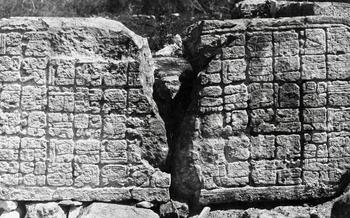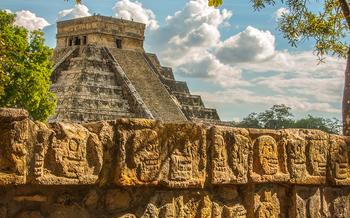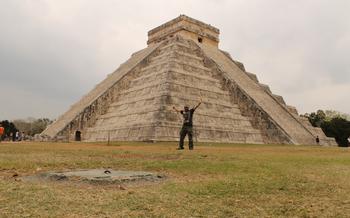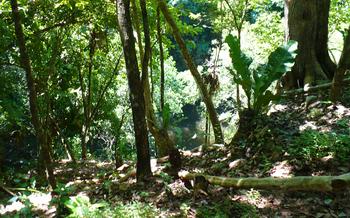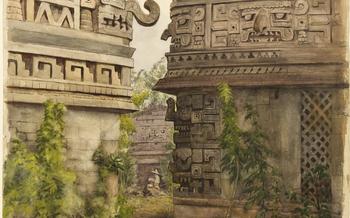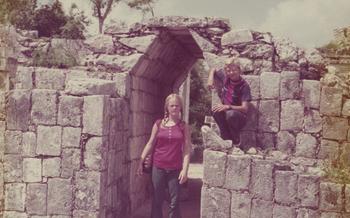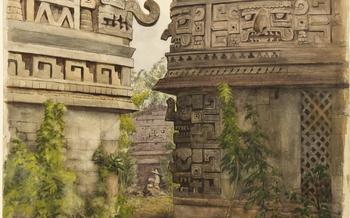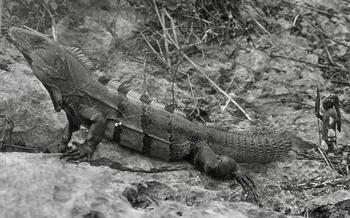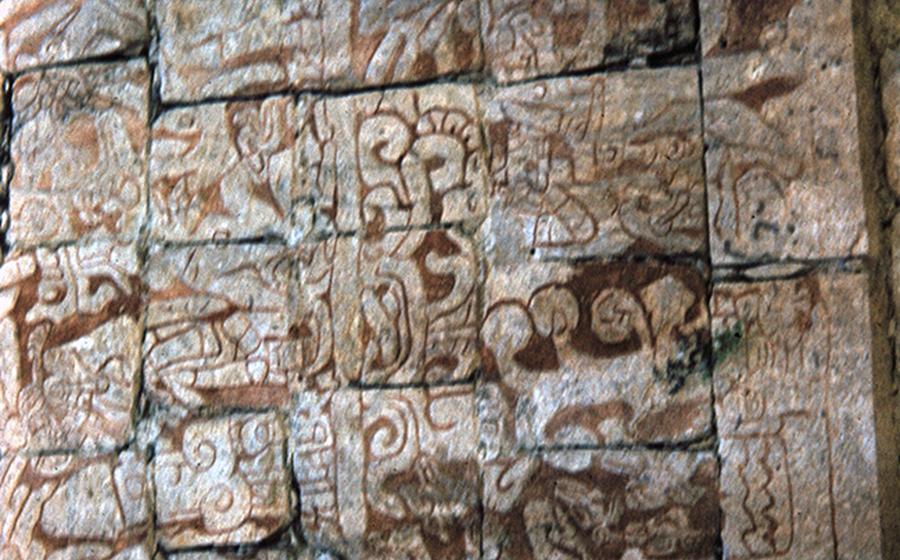
Temple of the Bearded Man
- History of the Temple of the Bearded Man
- Architectural Features of the Temple of the Bearded Man
- Location within Chichen Itza
- Significance of the Bearded Man Figure
- Excavation and Restoration
- Visitor Information
- Best Time to Visit
- Tips for Exploring the Temple
- Clothing and Footwear
- Sun Protection and Hydration
- Photography Guidelines and Restrictions
- Other Nearby Attractions
- Transportation Options
- Budgeting for Your Visit
- Safety Considerations
- Local Cuisine and Dining Options
- Insider Tip: Uncover Hidden Gems and Unveiled Secrets
History of the Temple of the Bearded Man
The Temple of the Bearded Man, also known as the Temple of Kukulcan or the Templo de los Mascarones, is an ancient Mayan temple located in the heart of the Chichen Itza archaeological site in Mexico. Constructed during the Late Classic period (600-900 AD), this temple served as a significant religious and ceremonial center for the Maya civilization. Archaeological discoveries within the temple have revealed valuable insights into the intricate beliefs, rituals, and cultural practices of the ancient Maya.
Architectural Features of the Temple of the Bearded Man
The Temple of the Bearded Man stands out for its unique architectural features that set it apart from other Mayan temples in Chichen Itza. The most striking aspect of the temple is its intricate carvings and sculptures that adorn the exterior walls and interior chambers. These carvings depict a variety of figures, including the bearded man himself, as well as other deities, animals, and mythical creatures. The symbolism of these sculptures is still debated among scholars, but they are believed to represent important aspects of Mayan mythology and religion.
Another notable feature of the temple is its unusual shape. Unlike the more common rectangular or square-shaped Mayan temples, the Temple of the Bearded Man has a rounded or elliptical shape. This unique design may have been influenced by the temple's location on a natural hill or mound, which gave it a distinctive appearance.
The interior of the temple is divided into several chambers, each with its own unique features. The main chamber, which is located at the center of the temple, contains a large stone altar and a number of carved stelae or stone slabs. These stelae are inscribed with hieroglyphs that provide valuable information about the temple's history and its dedication to the bearded man deity.
Overall, the architectural features of the Temple of the Bearded Man showcase the exceptional craftsmanship and artistry of the Maya people. The intricate carvings, unique shape, and symbolic significance of the temple make it one of the most impressive and well-preserved structures in Chichen Itza.
Location within Chichen Itza
The Temple of the Bearded Man is strategically situated in the heart of Chichen Itza, one of the most well-preserved and well-known Maya cities in the world. It is located just a short walk from other iconic structures, such as the Great Ball Court, the Temple of Kukulcan, and the Sacred Cenote. This placement suggests that the temple held a significant place within the city's religious and ceremonial center.
The temple's proximity to these other structures allowed for easy access and participation in religious rituals and ceremonies. Its central location also facilitated interactions between the city's inhabitants, creating a vibrant and communal atmosphere. Furthermore, its position within the city's core allowed for easy access to important resources, such as water from the cenote and trade goods from the market.
The Temple of the Bearded Man's central placement within Chichen Itza highlights its importance as a ceremonial and communal space. It played a crucial role in the city's religious rituals and provided a gathering place for the Maya people to connect, trade, and celebrate their culture.
Significance of the Bearded Man Figure
The identity of the bearded man depicted on the temple's facade remains a subject of debate among archaeologists and historians. Some believe he represents a specific Maya ruler, such as K'inich Janaab' Pakal, the famous king of Palenque. Others suggest he may be a deity or a mythical figure associated with creation or fertility.
A compelling theory proposes that the bearded man represents Itzamna, one of the most revered gods in the Maya pantheon. Itzamna was considered the creator of the universe, the patron of knowledge and medicine, and the guardian of the sacred books. His association with the Temple of the Bearded Man could symbolize the temple's significance as a center of learning and religious ceremonies.
Myths and legends surrounding the bearded man figure add to the intrigue of the temple. One tale recounts how the man, known as Zamná, arrived from the sea, bringing with him knowledge and culture to the Maya people. Another legend tells of a great flood that wiped out much of the Maya civilization, leaving only a few survivors, including the bearded man.
Whatever the identity of the bearded man, his presence on the temple's facade underscores the deep religious and cultural significance of the site. The figure serves as a reminder of the complex spiritual beliefs and rich mythology that shaped the Maya civilization.
Excavation and Restoration
The Temple of the Bearded Man has undergone extensive excavation and restoration efforts since its initial discovery. The excavation process presented several challenges, including the dense vegetation that had overgrown the site and the delicate nature of the ruins themselves. Archaeologists and conservators worked meticulously to clear the area, uncover buried structures, and stabilize the existing remains.
Restoration efforts focused on preserving the integrity and authenticity of the temple while also ensuring its safety for visitors. Skilled artisans employed traditional construction techniques to repair damaged walls, reinforce weakened structures, and reconstruct missing elements. The use of specialized materials and methods allowed for the restoration to blend seamlessly with the original architecture, maintaining the temple's historical value.
Ongoing research and conservation projects continue to contribute to our understanding of the Temple of the Bearded Man. Archaeologists conduct regular surveys and excavations to uncover new artifacts and shed light on the temple's history and significance. Conservation efforts prioritize the preservation of the site's unique features, ensuring that future generations can appreciate its splendor and learn from its rich history.
Visitor Information
The Temple of the Bearded Man is open to the public daily from 8am to 5pm. Admission fees for Chichen Itza vary depending on the time of year and whether you choose to visit other attractions within the archaeological site. A basic entrance ticket, which includes access to the Temple of the Bearded Man and other major structures, typically costs around $10 USD.
Guided tours are available in multiple languages and offer a more in-depth exploration of the temple and its history. Prices for guided tours vary depending on the size of the group and the duration of the tour. You can also opt for a self-guided exploration of the temple, allowing you to explore at your own pace and take advantage of the numerous informative signs and exhibits throughout the site.
For visitors with disabilities, Chichen Itza offers designated parking areas, ramps, and accessible restrooms. Some areas of the site may still be challenging to navigate due to uneven terrain and steps, but assistance is available upon request.
Best Time to Visit
The best time to visit the Temple of the Bearded Man and Chichen Itza as a whole is during the shoulder seasons, which fall between April and May, and September and October. During these months, the weather is still pleasant, with warm temperatures and low humidity, but the crowds of tourists are significantly smaller. This makes for a more enjoyable and less hectic experience, allowing you to take your time exploring the site and capturing stunning photographs without the need to jostle for space.
If you are looking for a truly unique and memorable experience, consider visiting Chichen Itza during one of the equinox festivals, which occur twice a year, in March and September. During these special events, the sun aligns perfectly with the temple's main staircase, creating a mesmerizing optical illusion known as the "Serpent's Shadow." Thousands of visitors flock to Chichen Itza to witness this phenomenon, making it a popular and crowded time to visit. However, the spectacle is truly awe-inspiring and worth experiencing at least once in a lifetime.
It is important to note that Chichen Itza is closed on Mondays, so plan your visit accordingly. The site is open from 8:00 AM to 5:00 PM every other day of the week, with the last admission being at 4:00 PM.
Tips for Exploring the Temple
When embarking on your exploration of the Temple of the Bearded Man, there are several practical considerations to keep in mind to ensure a safe and enjoyable experience.
Clothing and Footwear
Choose comfortable, lightweight clothing that is appropriate for the warm and humid climate of Mexico. Avoid wearing shorts or revealing clothing, as it is considered disrespectful when visiting sacred sites. For footwear, opt for closed-toe shoes or sandals with good traction, as the temple's uneven surfaces can be slippery.
Sun Protection and Hydration
The sun in Yucatan can be intense, so be sure to wear sunscreen, a hat, and sunglasses to protect yourself from the harmful UV rays. It is also essential to stay hydrated, especially during the hot summer months. Bring a reusable water bottle and refill it whenever possible.
Photography Guidelines and Restrictions
Photography is generally permitted at the Temple of the Bearded Man, but certain restrictions may apply. Be respectful of other visitors and avoid using flash photography, as it can be distracting and disruptive. It is also important to refrain from climbing on the temple or touching the sculptures and carvings, as this can damage these ancient artifacts.
Other Nearby Attractions
In addition to the Temple of the Bearded Man, Chichen Itza is home to several other impressive structures and attractions. The Great Ball Court, the largest in Mesoamerica, is a testament to the ancient Maya's skill and athleticism. Visitors can marvel at the intricate carvings depicting scenes of the game and imagine the roar of the crowd as players competed for victory.
The Temple of Kukulcan, also known as El Castillo, is another iconic landmark of Chichen Itza. This towering pyramid is dedicated to the feathered serpent god, Kukulcan. Twice a year, during the spring and autumn equinoxes, the setting sun casts shadows that create the illusion of a serpent descending the temple steps, a phenomenon known as the serpent's descent.
Beyond the main ruins, visitors can explore the Sacred Cenote, a natural well that was used for religious ceremonies and sacrifices. The cenote's crystal-clear waters and lush vegetation create a mystical and serene atmosphere.
For a refreshing break from the heat, head to Cenote Ik Kil, located just a short drive from Chichen Itza. This stunning cenote features a deep pool surrounded by lush greenery and towering cliffs. Visitors can swim, snorkel, or simply relax on the sunbathing platforms.
If you have time, venture further afield to explore the lesser-known ruins of Ek Balam and Coba. These sites offer a more intimate glimpse into ancient Mayan culture and provide an opportunity to escape the crowds of Chichen Itza.
Transportation Options
Reaching Chichen Itza is relatively easy, with several transportation options available. Renting a car offers the freedom to explore the region at your own pace, allowing you to visit nearby attractions and cenotes. However, it's essential to consider the cost of gas and parking, as well as the driving conditions in Mexico.
For a more convenient option, hiring a driver or taking a guided tour from Cancun or Riviera Maya is a great choice. These tours often include transportation, a knowledgeable guide, and additional stops at other attractions along the way.
Public transportation is also an option, with buses departing from major cities like Cancun and Playa del Carmen. While cost-effective, buses can be crowded and uncomfortable, and the journey can take longer.
If you're short on time or prefer a hassle-free experience, organized tours from major cities are a good choice. These tours typically include round-trip transportation, a guided tour of Chichen Itza, and lunch.
Budgeting for Your Visit
Planning a budget for your trip to Chichen Itza is essential to ensure you have a comfortable and enjoyable experience. Here's a breakdown of the average costs you can expect:
Transportation: The cost of transportation to Chichen Itza will vary depending on your starting point and mode of transport. If you're renting a car, expect to pay around $50-$70 per day. Hiring a driver can cost anywhere from $100 to $200 per day. Public transportation options from Cancun and Riviera Maya are available and typically cost around $25-$35 per person round trip. Organized tours from major cities can range from $50 to $150 per person, depending on the tour package and inclusions.
Accommodation: Accommodation options near Chichen Itza range from budget hostels to luxury resorts. Hostels start at around $15-$20 per night, while mid-range hotels can cost anywhere from $50 to $100 per night. If you prefer a more luxurious experience, expect to pay upwards of $200 per night for a resort stay.
Food: Yucatecan cuisine is known for its rich flavors and unique dishes. A typical meal at a local restaurant can cost around $10-$If you're on a budget, you can find street food vendors selling traditional dishes for as low as $1-$For a more upscale dining experience, expect to pay around $20-$30 per person.
Other Expenses: Remember to factor in additional expenses such as entrance fees, guided tours, souvenirs, and tips. The entrance fee to Chichen Itza is around $25 for international visitors. Guided tours typically cost between $20 and $50 per person, depending on the size of the group and the duration of the tour.
Recommended Budget: To have a comfortable experience at Chichen Itza, it's recommended to budget around $100-$150 per person for a day trip. If you plan on staying overnight, expect to spend around $200-$300 per person, depending on your accommodation and dining choices.
Tips for Saving Money: - Visit Chichen Itza during the off-season (May-October) to avoid peak season crowds and higher prices. - Take advantage of package deals that often include transportation, entrance fees, and guided tours at a discounted rate. - Opt for budget-friendly accommodation options like hostels or guesthouses. - Eat at local restaurants or street food stalls to save on dining expenses. - Bring your water bottle and snacks to avoid buying overpriced items at the site.
Safety Considerations
When exploring Chichen Itza, it is essential to prioritize safety to ensure a smooth and enjoyable visit. Here are some general safety tips to keep in mind:
-
Be aware of your surroundings and maintain a level of vigilance, especially in crowded areas. Keep an eye on your personal belongings and avoid carrying large amounts of cash.
-
Stay hydrated and protected from the sun, as the weather in the Yucatan Peninsula can be hot and humid. Wear light, breathable clothing, sunglasses, and a hat.
-
Be respectful of the local culture and customs. Refrain from climbing on the ancient structures or engaging in inappropriate behavior.
-
Be mindful of wildlife, as there might be snakes, insects, and other animals in the area. Avoid touching or disturbing them.
-
Be cautious when taking photographs, as using flash photography or tripods may not be allowed in certain areas. Always ask permission before taking pictures of local people.
-
If you are traveling alone, be extra vigilant and consider joining a guided tour for added safety.
To ensure a safe and hassle-free experience, it is advisable to book your transportation and tours through reputable companies. Additionally, staying informed about current travel advisories and following the instructions of local authorities is recommended.
Local Cuisine and Dining Options
When visiting Chichen Itza, immersing yourself in the local cuisine is a must. Yucatecan cuisine, with its unique blend of Mayan and Spanish influences, offers a delightful array of dishes that will tantalize your taste buds.
Begin your culinary journey with the iconic cochinita pibil, a slow-roasted pork dish marinated in achiote paste and wrapped in banana leaves. Savor the tender, flavorful meat that melts in your mouth.
Another must-try is panuchos, a traditional dish consisting of fried tortillas filled with refried beans, topped with shredded turkey or chicken, and garnished with pickled red onions and avocado. The combination of textures and flavors is simply irresistible.
For a refreshing treat, indulge in agua de chaya, a local drink made from the leaves of the chaya plant. Its vibrant green color and slightly bitter taste make it a unique and refreshing beverage.
When choosing a restaurant near Chichen Itza, look for establishments that specialize in Yucatecan cuisine. Many local restaurants offer buffet-style meals, allowing you to sample a variety of dishes and experience the full range of flavors.
To find authentic and affordable food, venture off the beaten path and explore the local markets. Here, you'll find fresh produce, traditional dishes, and homemade snacks that are sure to delight your palate.
Remember, when trying new dishes, be open-minded and adventurous. Embrace the local flavors and don't be afraid to ask questions about the ingredients or preparation methods. Enjoying the local cuisine is an essential part of experiencing the rich culture of Chichen Itza.
Insider Tip: Uncover Hidden Gems and Unveiled Secrets
Beyond the iconic facade of Chichen Itza, there lies a world of hidden gems and untold stories waiting to be discovered. For an unforgettable experience, venture off the beaten path and explore the lesser-known corners of this ancient city.
Secret Spot for Panoramic Views: Escape the crowds and climb to the top of the Templo de las Mesas for breathtaking panoramic views of the entire site. Capture the beauty of Chichen Itza from a unique perspective, with the majestic El Castillo towering in the background.
Off-the-Beaten-Path Attraction: Discover the Cenote Sagrado, a sacred cenote located just a short walk from the main ruins. This natural wonder was once used by the Mayans for religious ceremonies and is still considered a sacred site today. Take a refreshing dip in its crystal-clear waters and immerse yourself in the tranquility of this hidden oasis.
Avoiding the Crowds: To avoid the peak tourist hours, plan your visit early in the morning or late in the afternoon. Alternatively, consider visiting during the off-season (May-October) to experience a more intimate and crowd-free atmosphere.
Intimate Cultural Experiences: For a deeper cultural immersion, venture beyond the main tourist areas and interact with the local Maya communities. Visit traditional Maya villages, learn about their customs and traditions, and support local artisans by purchasing their handcrafted souvenirs.
By embracing these insider tips, you'll uncover the hidden treasures of Chichen Itza and create memories that will last a lifetime.
